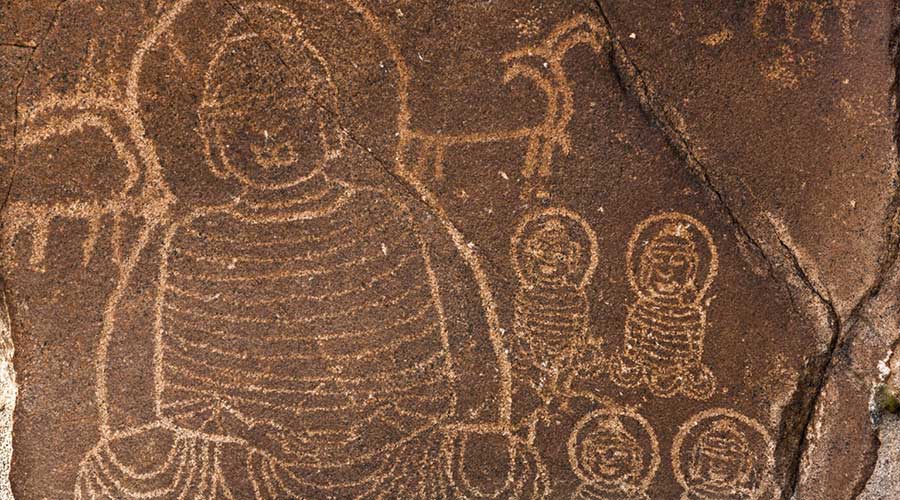The Cultural Heritage Management plans to protect the prehistoric rock carvings and inscriptions at the construction site of Diamer-Basha Dam through Pakistan’s Water and Power Development Authority.
According to the Burzine Waghmar, a research fellow at the Centre for Iranian Studies at the School of Oriental and African Studies in London, Pakistan is going to lose one of the most precious rock art carvings due to construction of the Diamer-Basha Dam. The proposed site of the dam hosts some 30,000 ancient art carvings and inscriptions which may vanish forever due to the construction of this reservoir.
Cliffs and rocks in the mountainous area of Gilgit Baltistan in northern Pakistan feature thousands of ancient carvings engraved into rocks. The Chilas valley, 244 miles north of Islamabad, has one of the largest known collections of rock carvings. Many of these are on the banks of the Indus River.
Burzine Waghmar in an email to Zenger News, the engraved cravings on the rocky slopes and boulders of the Indus gorge, stretching for approximately 100 kilometers (62 miles) along both banks of the river, is the largest collection of images and inscriptions on rocks from the eighth millennium B.C. to the Golden Age of Buddhism (fifth to eighth centuries A.D.). He further said that almost 37,116 petroglyphs, including 3,618 inscriptions on 5,928 boulders (95 archaeological sites), will be forever submerged once the Diamer dam is finished.
“Some will be submerged for eternity while others are expected to be partly visible seasonally when the shoreline dips,” he said. “Still others etched on higher elevations will be observable from the newer shoreline.”
Pakistan To Protect Rock Carvings At Khaplo Chilas Valley
The Cultural Heritage Management Plan to preserve the prehistoric rock carvings and inscriptions will be implemented as per Pakistan’s Water and Power Development Authority.
According to the protect cravings at dam site plan, “About 5,000 most important rock carvings and inscriptions ranging from seventh millennium B.C. to the 16th century A.D. would be 3-D scanned, documented, replicated and relocated.”
Waghmar, for his part, is skeptical of the Water and Power Development Authority’s plan, he said, “How committed Wapda remains in fulfilling this following Hauptmann’s demise and whether Wapda even has sufficient resources and know-how to apply a protective treatment to those etchings which will eventually lie below the water surface remains to be seen.”
She added, “Since a Chinese company has been contracted for the building of the dam, it is possible to seek assistance from the Chinese government to help us to build a dome-like structure above the most important carvings.”
Then Mahmood ul Hassan, assistant director of National Heritage and Culture, told Zenger News, “China would fund construction of an open-air museum in Chilas. “Rock carvings to be affected by the construction of the dam will be moved to the museum,” he further added, “As far as small rock carvings are concerned these can be moved using machinery. But when it comes to boulders, these will be cut in such a way that only carvings will remain, and then moved to the museum.”
“In such cases, 3-D pictures will be taken and later put on fiberglass,” he said. “There will be displaced in the museum.”
Image source





















